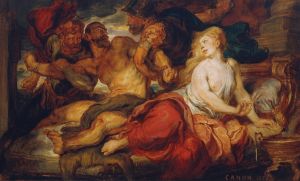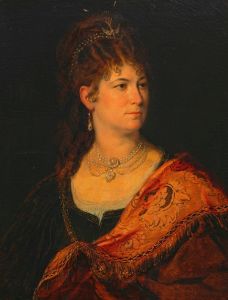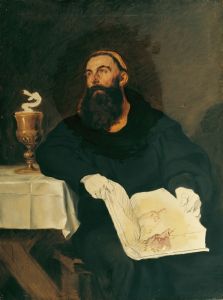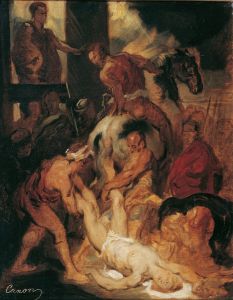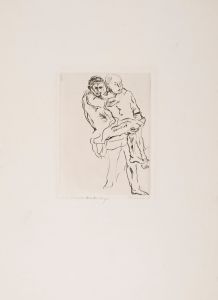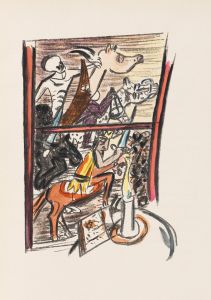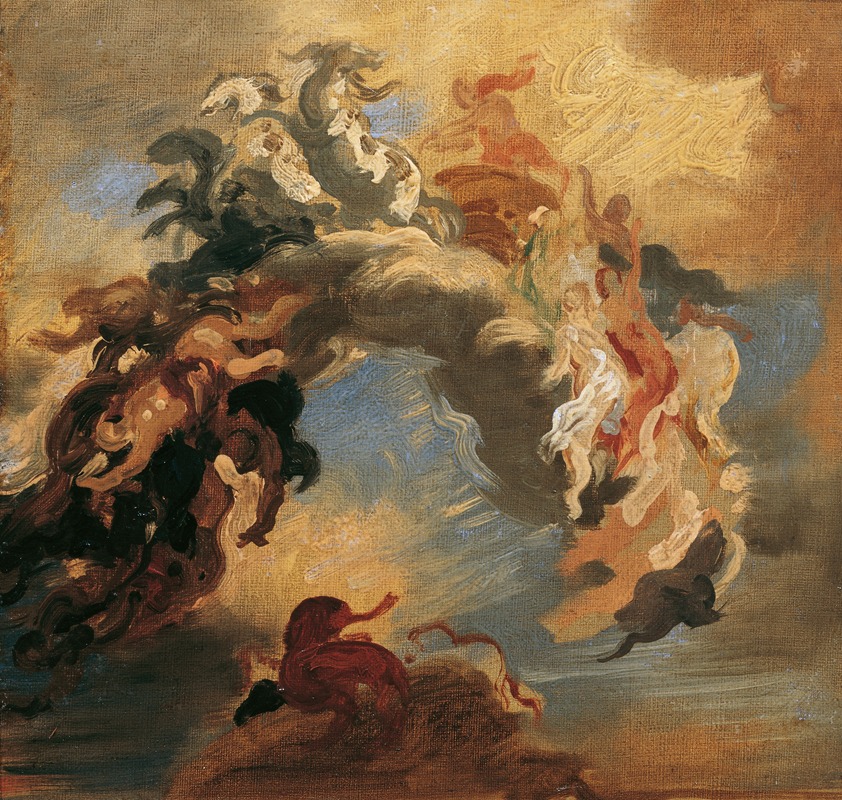
Der Sieg des Lichtes über die Finsternis
A hand-painted replica of Hans Canon’s masterpiece Der Sieg des Lichtes über die Finsternis, meticulously crafted by professional artists to capture the true essence of the original. Each piece is created with museum-quality canvas and rare mineral pigments, carefully painted by experienced artists with delicate brushstrokes and rich, layered colors to perfectly recreate the texture of the original artwork. Unlike machine-printed reproductions, this hand-painted version brings the painting to life, infused with the artist’s emotions and skill in every stroke. Whether for personal collection or home decoration, it instantly elevates the artistic atmosphere of any space.
Hans Canon's painting "Der Sieg des Lichtes über die Finsternis" (The Victory of Light over Darkness) is an intriguing work of art that reflects the artist's engagement with allegorical themes and his mastery in handling complex compositions. Hans Canon, born Johann Baptist Strašiřipka in 1829, was an Austrian painter known for his historical and allegorical paintings, as well as portraits. His work often explored grand themes, and "Der Sieg des Lichtes über die Finsternis" is no exception.
The painting, completed in the late 19th century, is a large-scale allegorical work that depicts the triumph of light over darkness, a common theme in art that symbolizes the victory of good over evil, knowledge over ignorance, or life over death. Canon's interpretation of this theme is both dramatic and intricate, showcasing his ability to convey complex ideas through visual art.
In "Der Sieg des Lichtes über die Finsternis," Canon employs a dynamic composition filled with movement and contrast. The painting likely features a central figure or figures representing light, surrounded by elements that symbolize darkness. The use of light and shadow is a critical aspect of the work, with Canon skillfully using these elements to enhance the allegorical message. The figures in the painting are rendered with a high degree of detail, typical of Canon's style, which often combined realism with idealized forms.
Hans Canon's background and education played a significant role in his development as an artist. He studied at the Academy of Fine Arts in Vienna, where he was exposed to the works of the Old Masters and contemporary artists. This education provided him with a solid foundation in the techniques of painting and an appreciation for historical and allegorical subjects. Canon's work is often compared to that of other 19th-century painters who explored similar themes, though his unique style and approach set him apart.
"Der Sieg des Lichtes über die Finsternis" reflects the broader cultural and intellectual currents of the 19th century, a time when many artists and thinkers were grappling with the rapid changes brought about by industrialization, scientific discoveries, and shifts in philosophical thought. The painting can be seen as a response to these changes, embodying the hope and optimism associated with the triumph of enlightenment and progress.
Hans Canon's contribution to art extends beyond this particular painting. He was a prominent figure in the Viennese art scene and received numerous commissions for public and private works. His paintings were well-received during his lifetime, and he was recognized for his ability to blend historical and allegorical subjects with a modern sensibility.
While "Der Sieg des Lichtes über die Finsternis" is a significant work within Canon's oeuvre, detailed information about the painting's current location or its exhibition history is not readily available. However, Canon's legacy as an artist continues to be appreciated by art historians and enthusiasts who recognize his skill in capturing the complexities of human experience through allegory and symbolism.
In summary, Hans Canon's "Der Sieg des Lichtes über die Finsternis" is a masterful representation of the timeless theme of light overcoming darkness. Through his detailed and dynamic composition, Canon invites viewers to reflect on the enduring struggle between opposing forces and the ultimate triumph of light, a theme that resonates across cultures and eras.







